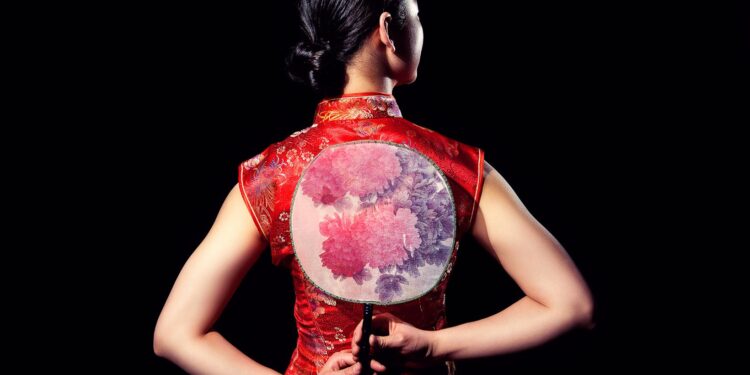Zhongguorencairexian
Hey there! As someone who has always been fascinated by different cultures and cuisines, I am thrilled to dive into the world of “zhongguorencairexian” with you. This unique concept, originating from China, has been gaining popularity worldwide, and for good reason. In this article, I’ll be sharing everything you need to know about zhongguorencairexian, from its meaning and history to the key ingredients and techniques that make it so special. So, grab a cup of tea and get ready to embark on a culinary adventure like no other!
The Importance of Chinese Etiquette in Daily Life
Chinese etiquette plays a significant role in the lives of zhongguorencairexian enthusiasts like myself. Embarking on a culinary journey is not just about indulging in delicious flavors; it’s also about embracing the cultural customs that surround the dining experience. Understanding and respecting Chinese etiquette can elevate your appreciation of zhongguorencairexian and ensure a more authentic and meaningful culinary adventure.
1. Dining as a Social Ritual
In Chinese culture, dining is not merely a way to satisfy hunger; it is a social ritual that brings people together. From family gatherings to business meetings, every meal is an opportunity to build and strengthen relationships. Chinese dining etiquette emphasizes the importance of harmony, respect, and good manners.
2. The Art of Chopstick Etiquette
The proper use of chopsticks is essential in Chinese etiquette. It’s not just about picking up food; it’s about showing refinement and respect. To master chopstick etiquette, it’s important to hold them correctly, avoid spearing food, and refrain from crossing or tapping chopsticks. Remember, zhongguorencairexian is not just about the flavors; it’s also about the elegance and grace of the dining experience.
3. Toasting And Drinking Rituals
In Chinese culture, toasting is a common practice that signifies respect, gratitude, and camaraderie. When participating in a toast, it’s important to hold the glass with both hands as a sign of respect and make eye contact while clinking glasses. It’s also important to pace yourself and drink in moderation, as excessive drinking is generally frowned upon.
4. Seating And Seating Arrangements
Seating arrangements at a Chinese dining table are carefully considered. The host is usually seated facing the entrance to welcome guests, and the most important guest is seated to the host’s right. When dining in a group, it is customary to wait for the host to take their seat before sitting down. Understanding the seating arrangements demonstrates your respect for tradition and hierarchy.

The Aignificance of Gift-giving in Chinese Culture
Appropriate Gifts For Different Occasions
In Chinese culture, gift-giving is an important aspect of social interactions and plays a significant role in expressing respect, gratitude, and establishing and maintaining relationships. When participating in the culinary adventure of zhongguorencairexian, understanding the significance of gift-giving can enhance your cultural experience. Here are some key points to keep in mind when selecting appropriate gifts for different occasions:
- Business occasions: When attending business meetings or events, it is customary to bring a small gift to show appreciation and goodwill. Some suitable gifts include high-quality tea, a beautiful pen, or a small token representing your country’s culture.
- Weddings: In Chinese weddings, monetary gifts are common and considered a symbol of good luck and well wishes for the couple’s future. The amount given is typically in even numbers, as odd numbers are associated with funerals.
- Birthdays: When celebrating birthdays, it is common to give gifts that reflect the person’s interests or hobbies. Popular choices include books, accessories, or personal care items. The number four should be avoided, as it sounds similar to the word for “death” in Chinese.
- Chinese New Year: During this important holiday, it is customary to give red envelopes (also known as “hongbao”) containing money as a symbol of good luck and prosperity. The amount given is usually in even numbers and should avoid the number four.
Gift-Giving Taboos
While gift-giving is highly valued in Chinese culture, it’s important to be aware of certain taboos to avoid causing unintended offense or misunderstanding. Here are some common gift-giving taboos to keep in mind:
- Clocks and watches: These items symbolize the end of life and are associated with funerals. Giving clocks or watches as gifts should be avoided.
- Sharp objects: Objects such as knives or scissors symbolize cutting ties or relationships. They should not be given as gifts, as they may be seen as bringing bad luck or negative energy.
- Gifts in sets of four: The number four is associated with death in Chinese culture. Avoid giving gifts in sets of four, as it may be perceived as unlucky or inauspicious.
- White or black items: These colors are traditionally associated with mourning and are considered inappropriate for gift-giving. Opt for vibrant colors instead, which symbolize joy and happiness.
Conclusion: Embrace Chinese Etiquette For a Deeper Cultural Understanding
Embracing Chinese etiquette is essential for gaining a deeper cultural understanding of “zhongguorencairexian.” By understanding and respecting Chinese dining etiquette, we can fully appreciate the culinary adventure that this concept offers. From greetings and introductions to table manners, chopstick etiquette, and toasting rituals, each aspect of Chinese dining etiquette plays a significant role in creating a harmonious and respectful dining experience.














